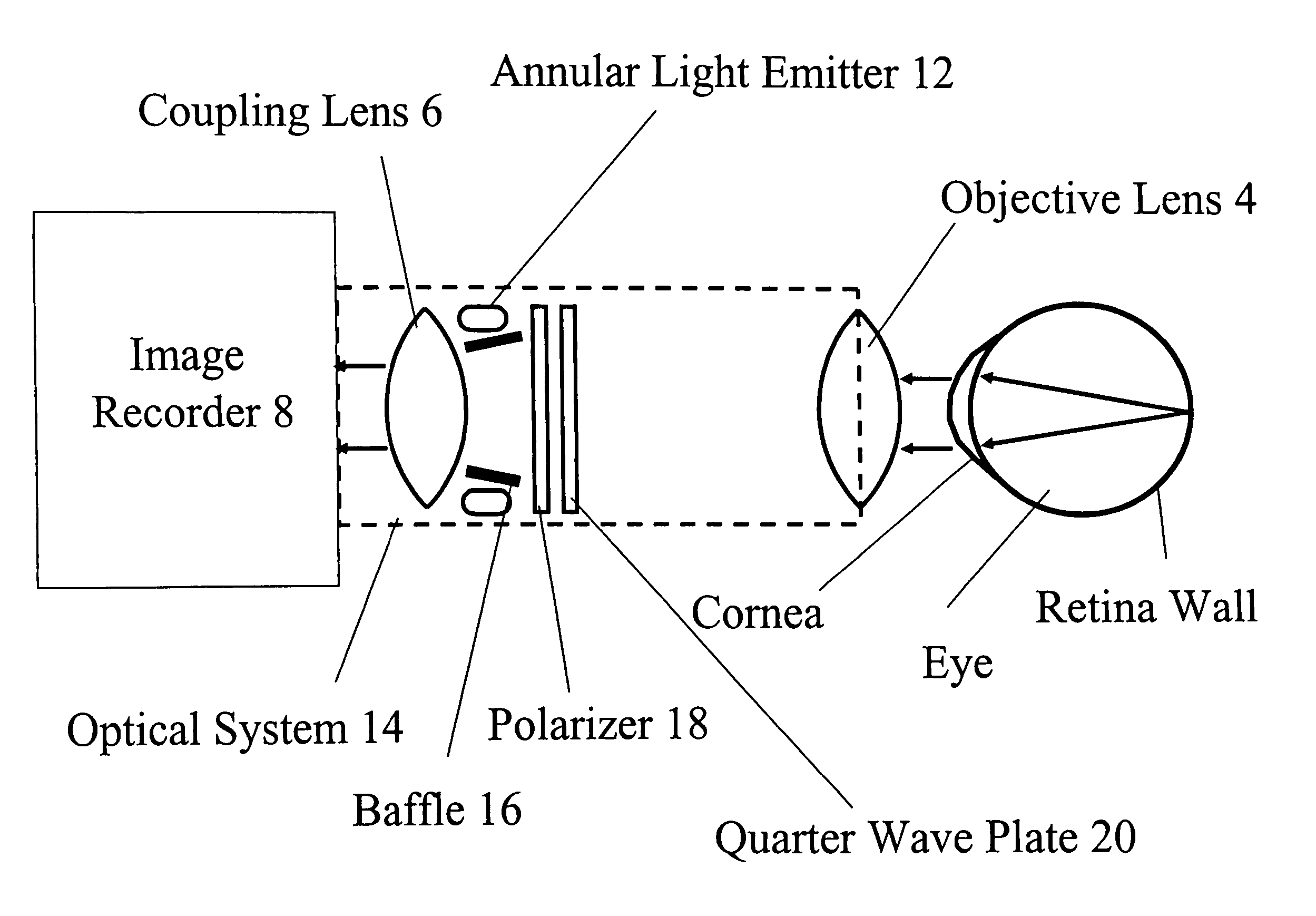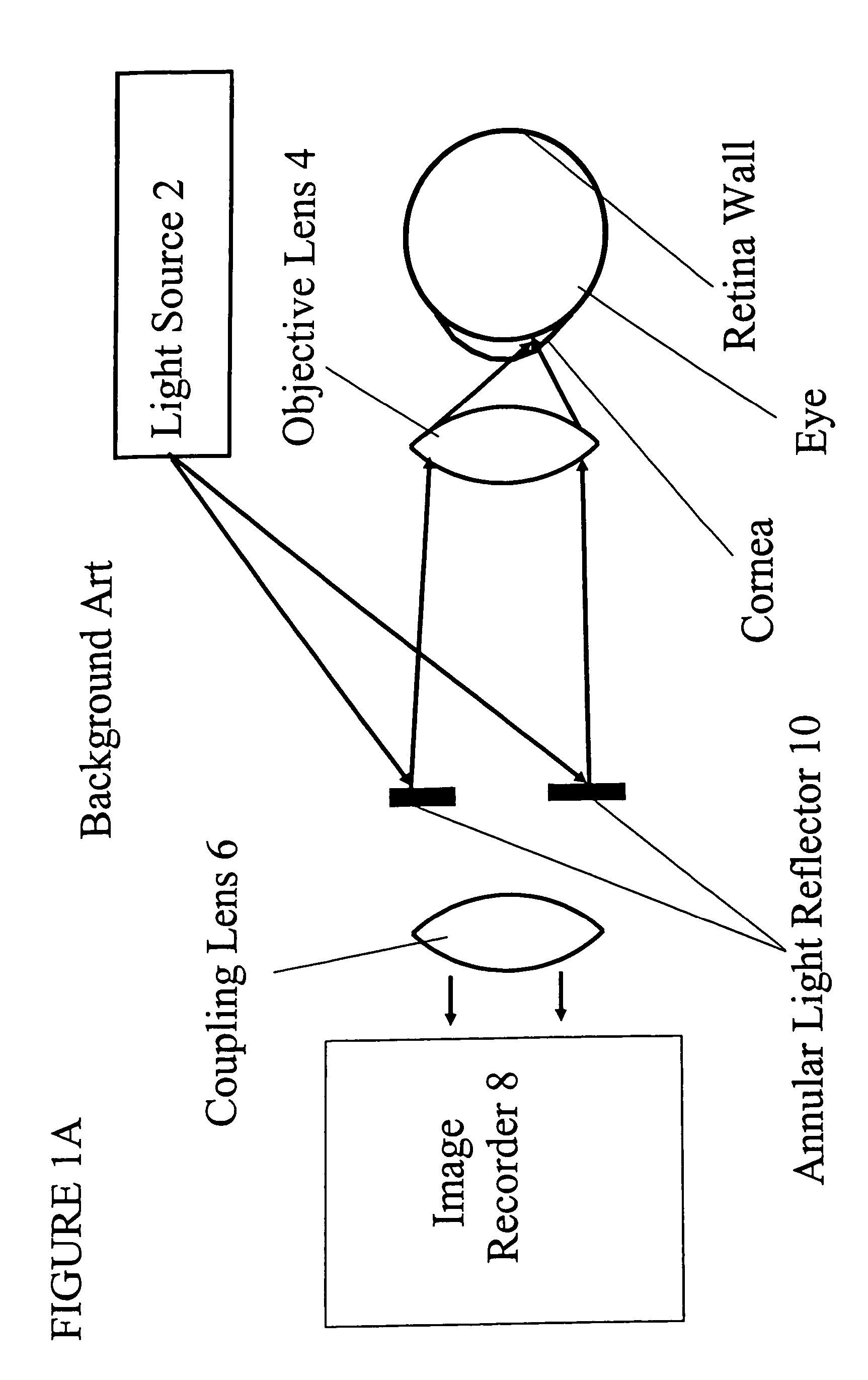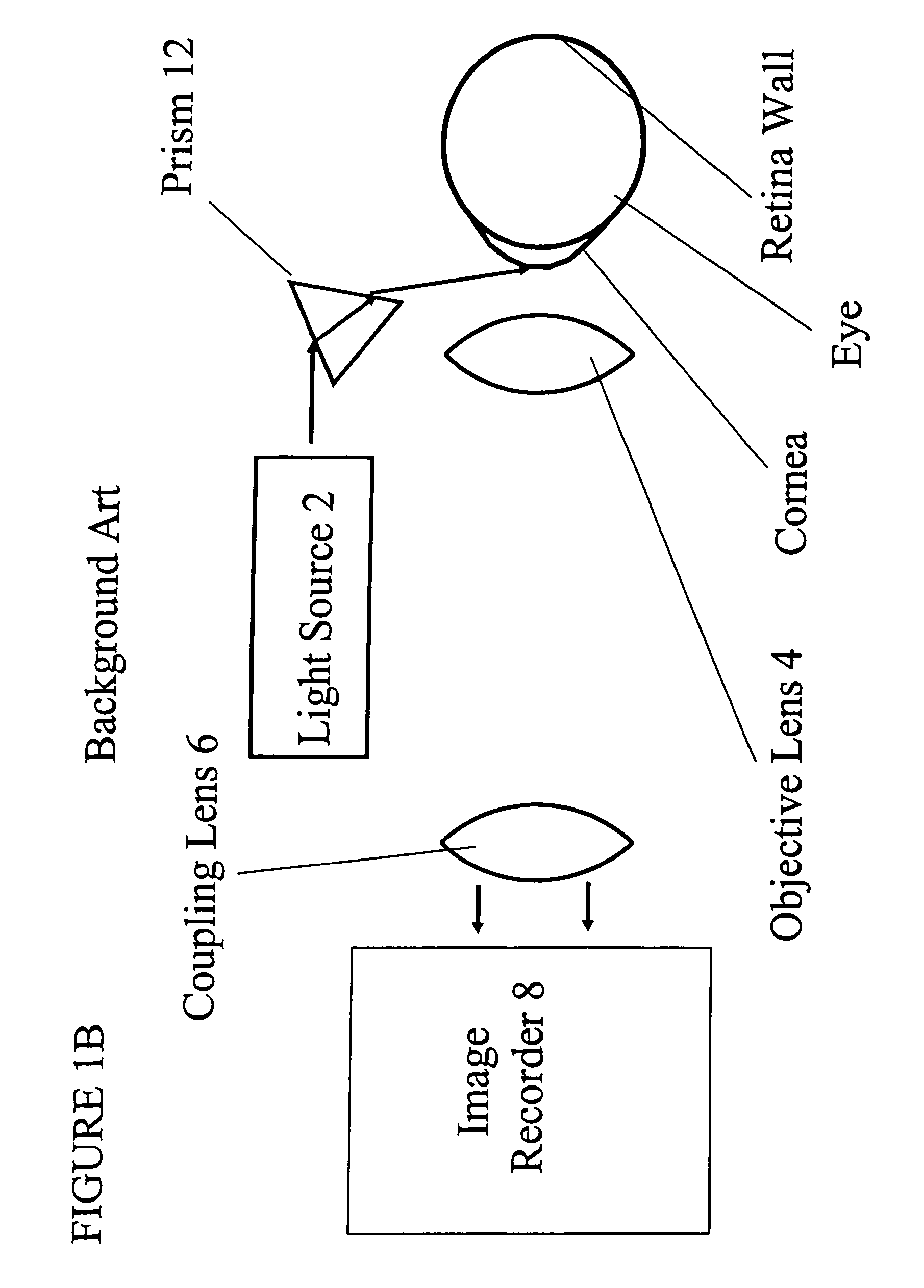Imaging lens and illumination system
a technology of illumination system and imaging lens, applied in the field of optical imaging, can solve the problems of large, complex, expensive, difficult to visualize or photograph the interior structure of the human eye (i.e., the ocular fundus), and the conventional fundus imaging system is large, heavy, and difficult to achiev
- Summary
- Abstract
- Description
- Claims
- Application Information
AI Technical Summary
Benefits of technology
Problems solved by technology
Method used
Image
Examples
Embodiment Construction
[0036]Referring now to the drawings, wherein like reference numerals designate like or corresponding parts throughout the several views, and more particularly to FIG. 2, FIG. 2 illustrates problems in illuminating the interior structure of an eye, especially a human eye. As shown in FIG. 2, light reflecting from the retinal surface must pass through the cornea and the fundus lens and pupil behind the cornea before then passing through the objective lens 4 and coupling lens 6 to the image recorder 8. While coatings such as anti-reflective coatings can be added to the external lens (i.e. the objective lens 4 and coupling lens 6) to minimize image transmission losses, the complexities of the reflections and transmissivity of the cornea, pupil, and fundus lens are beyond control of the eye examiner.
[0037]FIG. 3 illustrates one approach of the present invention used to reduce glare by indirectly illuminating portions of the eye such as for example the ocular fundus by illuminating direct...
PUM
 Login to View More
Login to View More Abstract
Description
Claims
Application Information
 Login to View More
Login to View More - R&D
- Intellectual Property
- Life Sciences
- Materials
- Tech Scout
- Unparalleled Data Quality
- Higher Quality Content
- 60% Fewer Hallucinations
Browse by: Latest US Patents, China's latest patents, Technical Efficacy Thesaurus, Application Domain, Technology Topic, Popular Technical Reports.
© 2025 PatSnap. All rights reserved.Legal|Privacy policy|Modern Slavery Act Transparency Statement|Sitemap|About US| Contact US: help@patsnap.com



